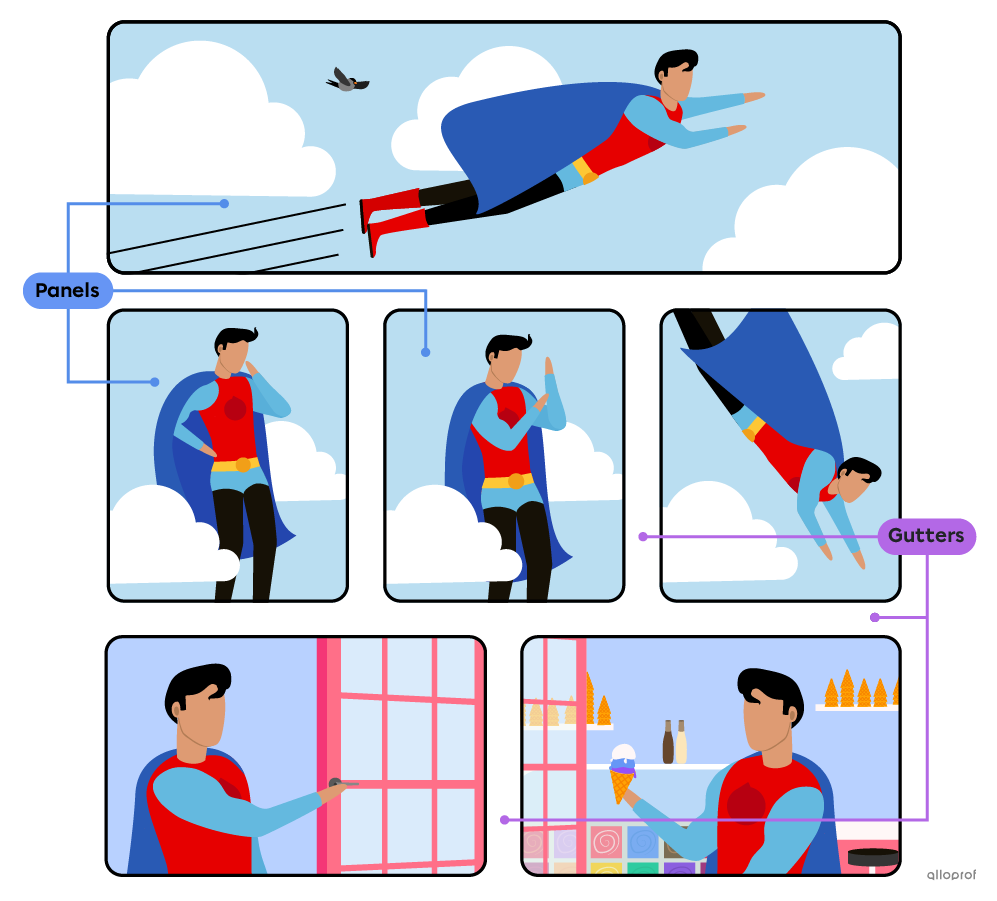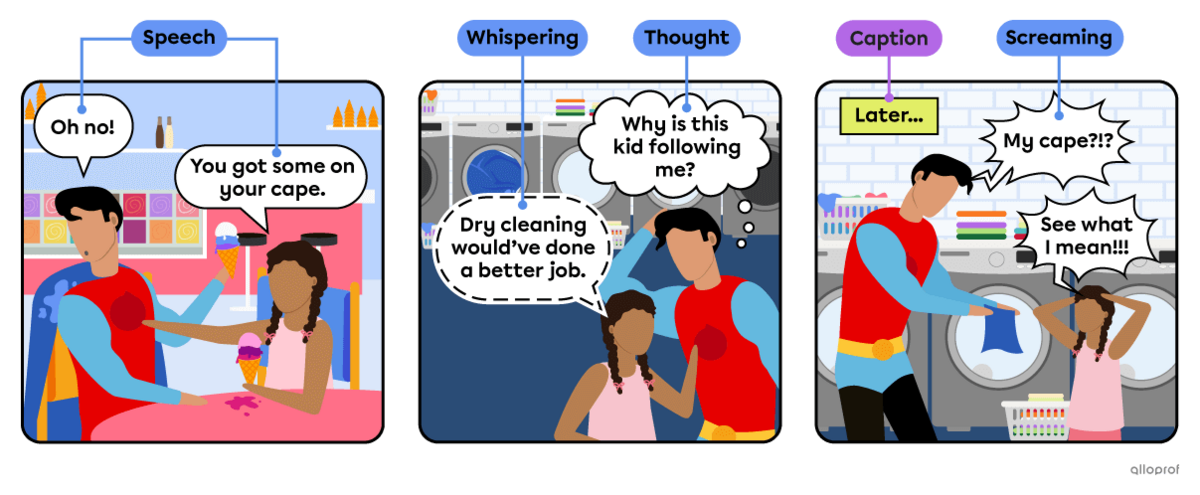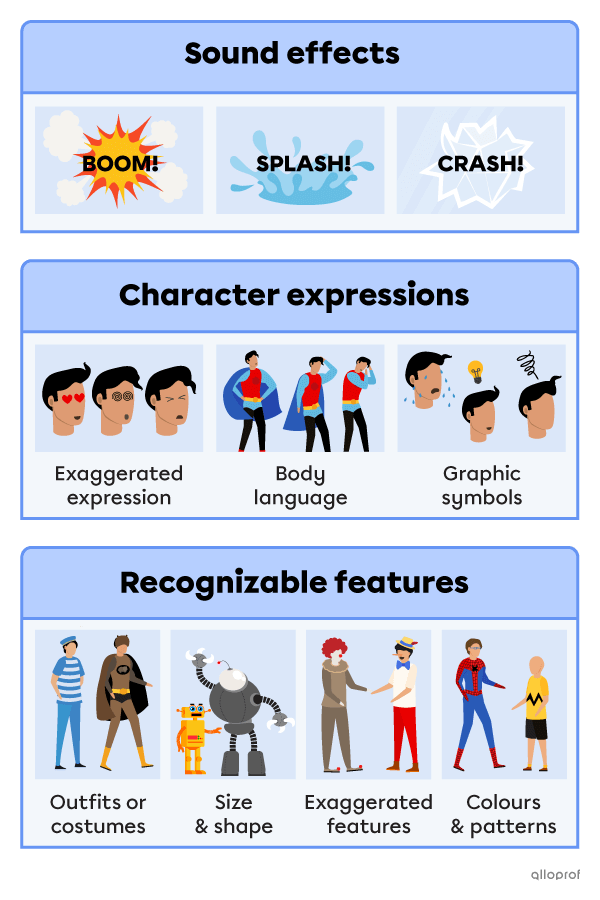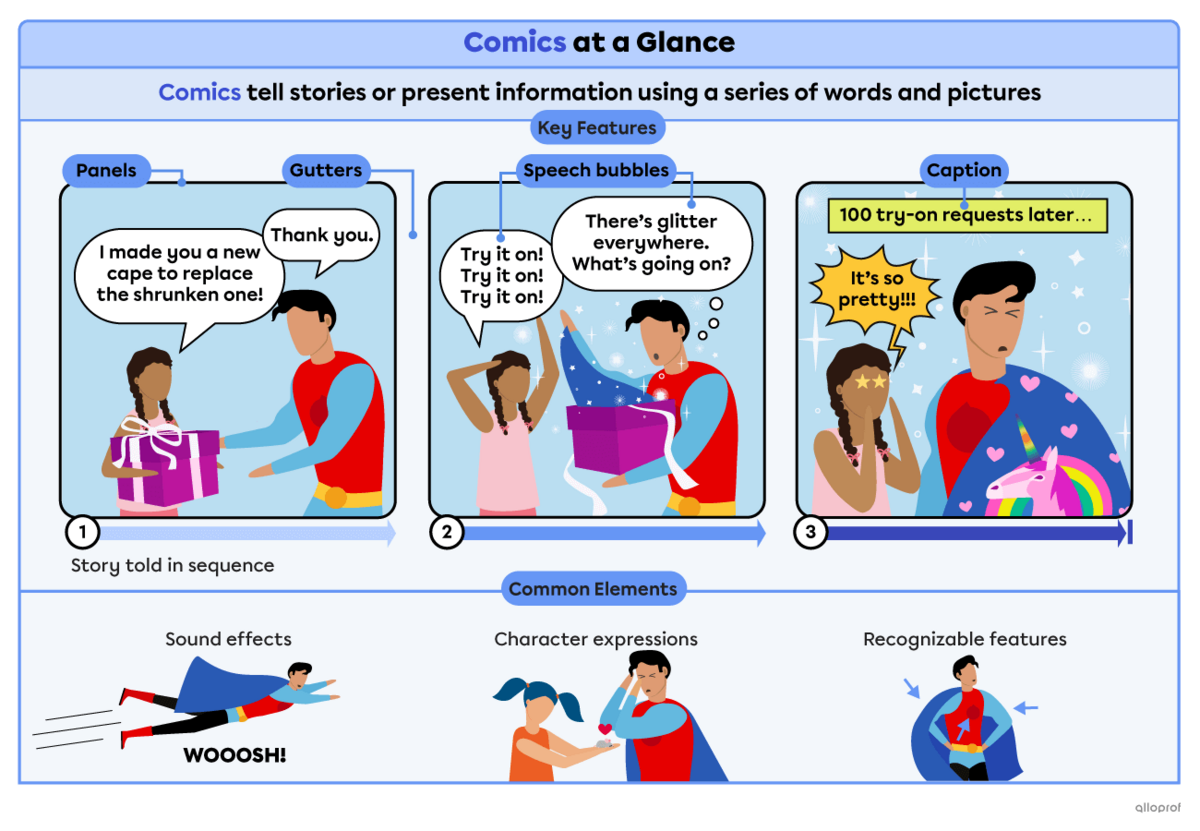Code de contenu
e1243
Slug (identifiant)
comics-types-of-texts-elementary
Contenu parent
Niveaux
Grade 3
Grade 4
Grade 5
Grade 6
Secondary I
Matière
English Language Arts
Contenu
Titre (niveau 2)
What Are Comics?
Slug (identifiant) du title
what-are-comics
Contenu
Corps
Comics are a type of text that tell stories or present information using a series of words and pictures.
Titre (niveau 2)
What Are the Features of Comics?
Slug (identifiant) du title
what-are-the-features-of-comics
Contenu
Corps
Here are the main features of comics.
Titre (niveau 3)
Panels & Gutters
Slug (identifiant) du title
panels-gutters
Image

Description
| Panels |
| They are boxes or frames that contain the pictures and text. |
| They are usually rectangular. |
| The number of panels used, the way they are organized and their sizes can vary a lot from one comic to another. |
| Gutters |
| They are the spaces between the panels. |
| They represent time passing and transitions from one moment to the other. |
Titre (niveau 3)
Speech Bubbles & Captions
Slug (identifiant) du title
speech-bubbles-captions
Image

Description
| Speech bubbles | |
| They hold the dialogue and point to who is talking. | |
| They are also known as: | word balloons |
| speech balloons | |
| dialogue balloons | |
| The most common types of speech bubbles are used for: | Speech → bubble shaped |
| Whispering → bubble shaped with a dotted outline | |
| Thoughts → cloud shaped (Also known as a thought bubble or thought balloon) | |
| Shouting → jagged outline | |
| Captions | |
| They are boxes that contain text like: | narrations |
| descriptions | |
| character thoughts (in some cases) | |
Titre (niveau 3)
Story Told in Sequence
Slug (identifiant) du title
story-told-in-sequence
Corps
Comic panels placed in sequence represent a series of events that form a story.
When done properly, the reader can easily follow the story from the first panel to the last.
Image

Titre (niveau 2)
What Can We Expect to Find in Comics?
Slug (identifiant) du title
what-can-we-expect-to-find-in-comics
Contenu
Corps
Comics are famous for using certain elements to tell their stories.
Here are some examples of the most common ones:
Image

Description
| Sound effects |
| Words that represent sounds |
| Character expressions |
| Exaggerated expression |
| Body language |
| Graphic symbols |
| Recognizable features to tell characters apart |
| Outfits or costumes |
| Size & shape differences |
| Exaggerated features |
| Colours & patterns |
Titre (niveau 2)
Comics at a Glance
Slug (identifiant) du title
comics-at-a-glance
Contenu
Image

Texte bouton
Click to download.
Titre (niveau 2)
See Also
Slug (identifiant) du title
see-also
Contenu
Liens
Retirer la lecture audio
Non
Outil imprimable
Off